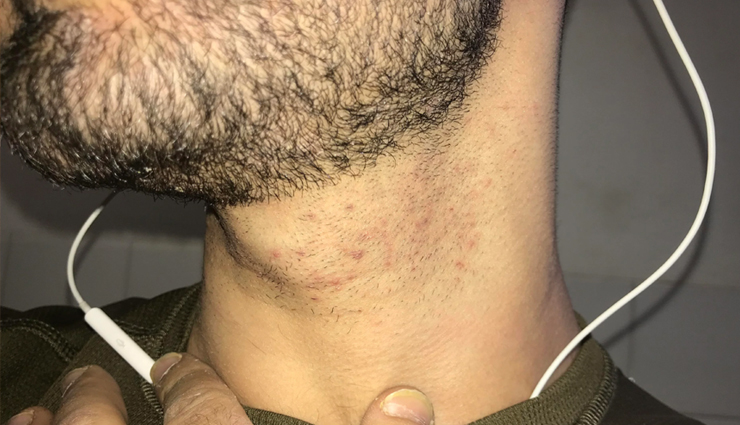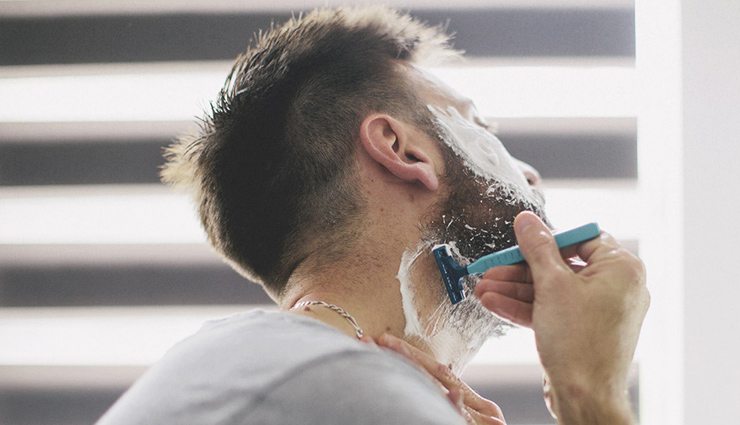7 Tips For Men To Help You Reduce Ingrown Hair
By: Pinki Wed, 30 Sept 2020 10:48:25

A wise man once said, “A beard is like a pet I don’t want to have – I have to groom it, take care of it, but it would feel wrong to just get rid of it.” And like all pets, beards too can be a bit of a nuisance at times. Pseudofolliculitis barbae goes by a few names; “razor bumps” or “ingrown hairs” and is a common condition in those who remove their facial hair. Though it is more common in males, females are also susceptible to the condition. Pseudofolliculitis barbae refers to ingrown hairs of the facial region but can occur in any region of skin in which hair removal is implemented. Those of us who have had experience with ingrown hairs know all too well how uncomfortable they can become, both physically and socially. It is for this reason we’ve complied salient information in hopes to help you learn what causes ingrown hairs and how you can avoid them.
To better understand what ingrown hairs are and why they happen, we must first understand the anatomy of our skin and hair follicles. The skin is composed of three layers, the outermost layer is known as the epidermis, then there is the dermis, and the deepest layer of skin is known as the hypodermis or subcutaneous fascia. The hair follicle (the structure responsible for growing and housing hair) originates at the surface of the epidermis and extends down into the deep layers of the dermis. It is at this deep layer in the dermis that the hair follicle dilates into the hair bulb – the base where cell proliferation is the highest and pushes the newly formed hair outward towards the epidermis.

Stop Shaving, Start Trimming
The title of this section says it all. By discontinuing removal of the hair for a month, it allows hair to grow to a length that is unlikely to penetrate the skin. Letting hair grow has historically been the treatment of choice for pseudofolliculitis barbae. But it is easy to understand why growing out one’s facial hair may not appeal to all of us, so instead, use an electric trimmer that keeps the hair at least 1mm in length (a length longer than razor shaves). By using an electric trimmer and keeping the hair at an appropriate length it reduces the risk of developing ingrown hairs.
Shower First, Shave After
It has been recommended that individuals shave after a warm bath. The warm water helps to soften the hair and reduces the number of sharp edges formed during shaving. After a hot shower, a diligent pre-shave regimen is crucial. Incorporating a warm compress and a mild cleanser -followed by generous amounts of shaving cream left on for 10 minutes further softens the hair and also aids in preventing the generation of sharp-ended hairs while shaving. As a final note, it has been suggested that one should rinse the razor blade with warm water after each stroke in order to prevent the traction that occurs from hair build within the razor.

Shave With the Hair and Not Against the Grain
An additional key point is to shave in a direction that is parallel to how the hair is growing, rather than going against the grain or at an angle, again, effectively limiting the production of sharp-tipped hair is crucial.
Sometimes Less is More
Consider using a single blade razor instead of a multi-bladed razor. These days, razor blade companies boast about the number of blades their razors have, yet the first blade actually acts to pull the hair up while the subsequent blades are the ones that do the cutting. This subtle but critical nuance is important because it allows for the cut hair to retract back into the follicle. By using a razor with fewer blades and avoiding stretching of the skin while shaving can potentially aid in limiting ingrown hair formation.
Scrub-a-Dub-Dub
Use of a slightly abrasive cloth, antibacterial soap, and warm water while scrubbing in a circular motion to wash the bearded area/ location of ingrown hairs can be an effective method in releasing hairs embedded in the skin. This practice should be done daily in order to gain maximum benefit. On a side note, it is not recommended to pick or pluck ingrown hairs – such actions can lead to potential worsening of inflammation and can even result in scarring.
Nothing Wrong With A Little Chemistry
Beyond just physical techniques, use of chemical depilatories is also a recommended method for removing hair for individuals with pseudofolliculitis barbae. Chemical depilatories contain compounds such as barium sulfide or calcium thioglycolate that act to break apart the disulfide bonds in hair (these bonds are what give hair its structural integrity). By destroying these bonds, hair can be easily scrubbed away and also results in hair that is softer, blunt-ended, and feather-tipped. Because chemical depilatories have the potential to irritate the skin, it is advised that individuals apply a small amount of the product on a nonfacial area first in order to determine if irritation occurs.
If All Else Fails, It’s Time To Laser
Since pseudofolliculitis barbae is caused by hair regrowth, use of lasers to selectively destroy hair follicles has been shown to be an effective treatment option. Of the potential methods to reduce the occurrence of ingrown hairs listed here, laser hair reduction is the only one that is a medical procedure and should only be done by a trained physician. Many different laser hair reduction systems exist, but ultimately they all act to destroy hair follicles, causing a decrease in the thickness and density of hair in the treated area, leading to improvement in individuals suffering from the condition.



-1713979511-lb.jpg)

